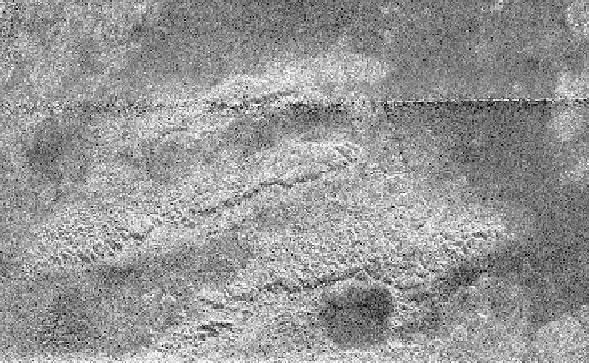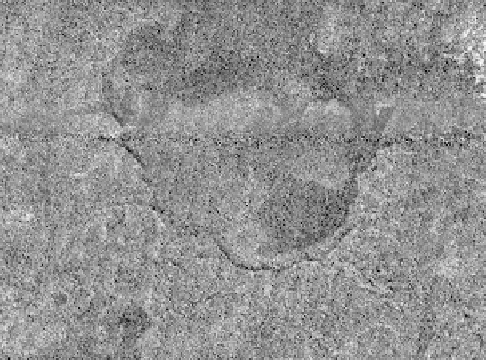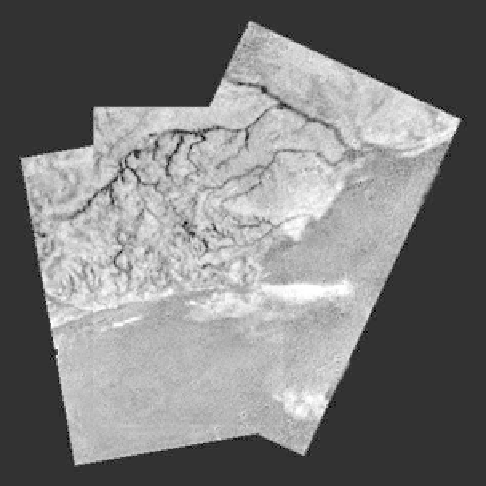Geology Reference
In-Depth Information
Figure 9.9. These three mountain chains in Xanadu
stretch 100 km in an east
west direction and are tectonic
features, possibly resulting from north
-
south crustal
compression. The radar-dark circular feature south of the
chains could be an impact scar; the white dotted line is a
gap in the radar data (NASA PIA10654).
-
Figure 9.10. A radar image of Titan, showing an irregular-shaped
basin ~100 km across, which has been interpreted as being a
cryovolcanic caldera; radar-dark and radar-bright features on the
basin
floor represent surfaces of different roughnesses, which could
be
flows of different textures. The dark band through the middle of
the basin is the seam between two swaths of radar data (NASA
Cassini PIA12111).
Figure 9.11. A mosaic of images from the Huygens descent camera
showing the terrain around the probe landing site; the dark
dendritic pattern is interpreted to represent
fluvial run-off of liquid
methane (ESA; NASA PIA07236).
By far the dominant surface process revealed by the
Cassini
Huygens mission is gradation by wind and
fluvial
activity. Surface erosion and re-deposition by liquid meth-
ane is evident, and these processes are likely to be active
today. The
first hints of
fluvial processes came from the
Huygens descent images, which showed a quasi-dendritic
pattern of dark channels (
Fig. 9.11
). Subsequent radar
images from the orbiter showed that channel systems
(some of which are contained within valleys) are common
in many areas of Titan, with some being at least 1,000 km
long. Many studies of the channel-forming liquids and
the
flow dynamics in the Titan environment have been
conducted, as reviewed by Jaumann et al.(
2009a
). For
-
example, methane
'
s viscosity in the ~94 K environment of
Titan would be some
five times lower than that of water on
Earth. Adjustments for
flow conditions for Titan
s lower
gravity and the composition of erodible surface materials
(i.e., organic compounds and water-ice) indicate that
sand-to cobble-sized material (~15 cm) would be easily
transported, which is consistent with materials seen in the
Huygens images of the surface.
Some channels are radar-bright, indicating that their
floors are littered with coarse material, such as boulders,
while others are radar-dark, which could indicate the
'





